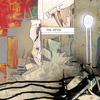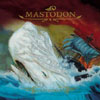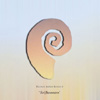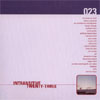 The covers record is a grand art form, often abused, but with a conceptlike this one there's no way to go wrong. Sally Timms' latest soloalbum is primarily comprised of songs written by men, hence the title,and with anyone else some of the material might come off a bit tooforced. Timms takes these songs and, to her credit, does not change anywords or situations in the songs to make them work from a woman'sperspective. These performances are the original songs in newarrangements, brought about by Timms and the engineering/productionteam of Johnny Dowd and Justin Asher. The emphasis is on raw, however,with songs sometimes reduced in parts to just Timms' voice, aforeboding and sensuous being all its own. She has chosen some ratherinteresting specimens to emulate, from her other band the Mekons toMark Eitzel to Ryan Adams, and each interpretation bears a stamp thatwill never wash off in my mind. This makes it impossible to listen tothe original song without thinking of Timms' rendition, a testament toher artistry and originality when the tunes aren't even hers to beginwith. The two Mekons songs are especially moving, as her interpretationis informed by something deeper, so any changes could imply thatperhaps this is the way Timms always wanted the song to go; though theMekons are along for the ride, providing the music. Most of all, thisis a solo album of striking variation, with revealing and incrediblyprovocative imagery. The instrumentation involved alone is a wild ride,from musical saw to accordion to moog bass to strightforward guitar anddrums. Programming by Asher is never tiresome, and Timms' voice risingfrom a whisper to a plaintive wail and filling the room with nakedemotion is purely goosebump-inducing. By the time "Little Tommy Tucker"takes the speakers, I'm spent, and it's almost the bedtime story I needto fall asleep. It would be, that is, if it weren't so completelymesmerizing, with her frightening "none shall be married" refrainrepeating in my head so vividly that I may never sleep again.
The covers record is a grand art form, often abused, but with a conceptlike this one there's no way to go wrong. Sally Timms' latest soloalbum is primarily comprised of songs written by men, hence the title,and with anyone else some of the material might come off a bit tooforced. Timms takes these songs and, to her credit, does not change anywords or situations in the songs to make them work from a woman'sperspective. These performances are the original songs in newarrangements, brought about by Timms and the engineering/productionteam of Johnny Dowd and Justin Asher. The emphasis is on raw, however,with songs sometimes reduced in parts to just Timms' voice, aforeboding and sensuous being all its own. She has chosen some ratherinteresting specimens to emulate, from her other band the Mekons toMark Eitzel to Ryan Adams, and each interpretation bears a stamp thatwill never wash off in my mind. This makes it impossible to listen tothe original song without thinking of Timms' rendition, a testament toher artistry and originality when the tunes aren't even hers to beginwith. The two Mekons songs are especially moving, as her interpretationis informed by something deeper, so any changes could imply thatperhaps this is the way Timms always wanted the song to go; though theMekons are along for the ride, providing the music. Most of all, thisis a solo album of striking variation, with revealing and incrediblyprovocative imagery. The instrumentation involved alone is a wild ride,from musical saw to accordion to moog bass to strightforward guitar anddrums. Programming by Asher is never tiresome, and Timms' voice risingfrom a whisper to a plaintive wail and filling the room with nakedemotion is purely goosebump-inducing. By the time "Little Tommy Tucker"takes the speakers, I'm spent, and it's almost the bedtime story I needto fall asleep. It would be, that is, if it weren't so completelymesmerizing, with her frightening "none shall be married" refrainrepeating in my head so vividly that I may never sleep again.
Hotter than July. This week's episode has plenty of fresh new music by Marie Davidson, Kim Gordon, Mabe Fratti, Guided By Voices, Holy Tongue meets Shackleton, Softcult, Terence Fixmer, Alan Licht, pigbaby, and Eiko Ishibashi, plus some vault goodies from Bombay S Jayashri and Pete Namlook & Richie Hawtin. Solstice moon in West Midlands, UK photo by James. Get involved: subscribe, review, rate, share with your friends, send images! |



 Whimsy and fantasy are all it takes for Chris Barth to make a goodalbum. The lyrics on the album don't always make sense, but sometimesthey have a familiar sentiment that conjure up memories and ideas aboutthe world that might otherwise be forgotten. The whole of this recordworks like this: Barth's voice takes front and center on nearly everytrack and it is a gorgeous voice capable of both distress and relief.The music, when it isn't just an acoustic guitar, rolls along like agarage band trying to feel out its new equipment and this childlikeclumsiness is what marks the best songs on the album. In the meantimeBarth speaks out lyrics like "I'm gonna watch my baby trees grow / Overthe next fifty years I hope / I should have known I would hurt you likethat / I'll bet the farm I won't make it home." Not exactly the stuffof Byron or Whitman, but it's the way that he sings that makes thelyrics so important; it is as though they were written to fit aroundthe music and were not so much drawn up to convey deep, personalconvictions. The music, as a whole, is simplistic with arrangementsthat play on the addition of instruments in just the right place. "OurPlace in the Sky" is just a popping guitar rhythm with Barth's voicehighlighting the accents until a bass guitar begins to wrap all therhythm into a tide of melody and completes the song. "Watching YourHouse Burn" is a slow rhythmic intensification that pulses with all thereverb of layered acoustic guitars and the uneasy rumbling of drummachines. The opening lines, "I got poems on my shelf / I pick one offand raise a spell," are the epitome of the album and mark theprogression of this song and others. As the acoustic guitar races alongwith Barth's voice a tension is developed that relieves itself in thesound a heavy, thumping bass and the echo of a simple and repeatedlyrical theme. Most of these songs clock in at the two minute mark, butone outstanding and instrumental exception is "Sun Enters Capricorn."Whether or not the album's lyrics are completely convincing or even ifthey were just built around the songs after they were developed, Born a Black Diamondas a deliciously mystical aura. The guitar wailing and phased nuanceson "Sun Enters Capricorn" wobble and tumble like a living creature inits death throes. The drums on this track are noticeably heaviercompared to others and everything after this song seems to emanate outof this song, as though it were the most important piece. "The Balladof Normanoak" closes the album on a solemn and reverent note, as thoughthe music was all devoted to the mythical character of Normanoak. Afuzzed-out guitar makes its presence known between Barth's pained voiceand the light plucking of an acoustic melody. "Normanoak, Normanoak /You touched me, you let out some smoke / Oh it goes, oh it goes" andthe story (pointless? epic? nonsensical pseudo-myth?) ends.
Whimsy and fantasy are all it takes for Chris Barth to make a goodalbum. The lyrics on the album don't always make sense, but sometimesthey have a familiar sentiment that conjure up memories and ideas aboutthe world that might otherwise be forgotten. The whole of this recordworks like this: Barth's voice takes front and center on nearly everytrack and it is a gorgeous voice capable of both distress and relief.The music, when it isn't just an acoustic guitar, rolls along like agarage band trying to feel out its new equipment and this childlikeclumsiness is what marks the best songs on the album. In the meantimeBarth speaks out lyrics like "I'm gonna watch my baby trees grow / Overthe next fifty years I hope / I should have known I would hurt you likethat / I'll bet the farm I won't make it home." Not exactly the stuffof Byron or Whitman, but it's the way that he sings that makes thelyrics so important; it is as though they were written to fit aroundthe music and were not so much drawn up to convey deep, personalconvictions. The music, as a whole, is simplistic with arrangementsthat play on the addition of instruments in just the right place. "OurPlace in the Sky" is just a popping guitar rhythm with Barth's voicehighlighting the accents until a bass guitar begins to wrap all therhythm into a tide of melody and completes the song. "Watching YourHouse Burn" is a slow rhythmic intensification that pulses with all thereverb of layered acoustic guitars and the uneasy rumbling of drummachines. The opening lines, "I got poems on my shelf / I pick one offand raise a spell," are the epitome of the album and mark theprogression of this song and others. As the acoustic guitar races alongwith Barth's voice a tension is developed that relieves itself in thesound a heavy, thumping bass and the echo of a simple and repeatedlyrical theme. Most of these songs clock in at the two minute mark, butone outstanding and instrumental exception is "Sun Enters Capricorn."Whether or not the album's lyrics are completely convincing or even ifthey were just built around the songs after they were developed, Born a Black Diamondas a deliciously mystical aura. The guitar wailing and phased nuanceson "Sun Enters Capricorn" wobble and tumble like a living creature inits death throes. The drums on this track are noticeably heaviercompared to others and everything after this song seems to emanate outof this song, as though it were the most important piece. "The Balladof Normanoak" closes the album on a solemn and reverent note, as thoughthe music was all devoted to the mythical character of Normanoak. Afuzzed-out guitar makes its presence known between Barth's pained voiceand the light plucking of an acoustic melody. "Normanoak, Normanoak /You touched me, you let out some smoke / Oh it goes, oh it goes" andthe story (pointless? epic? nonsensical pseudo-myth?) ends.  As a drummer, I'm always fascinated when electronic/studio-basedprojects take to the road with extra musicians in tow; the humanelement provided to make the live shows a lot more exciting.Performances augmented by a live drummer, guitarist, etc. interactingwith pre-set samples and loops adds a new dimension to thecompositions, blending organic rhythms and tones with digitallyprocessed signals. The outcome generally takes the music to a whole newlevel and is, of course, much more interesting to watch than someoneconstantly keeping busy behind a mixing desk while note-for-noterenditions play out. For their latest release as the Two LoneSwordsmen, the dynamic studio duo of Andrew Weatherall and KeithTenniswood have tracked the bulk of their tunes with the live groupapproach. From the Double Gone Chapelhas the guys using four separate drummers throughout to hook their rawbass lines and overdriven synths on. They proceed to layer upon theirvarious rhythm sections for some novel, dark and sexy tracks. Thehalf-time squelching keyboard groove of "Stack Up" opens up the discfor distorted, dental drill-like whirs which weave through the soundsof a digital beach shore. The steady pulses of the guitar percussive"Formica Fuego" and sliding down-tuned bass of "The Lurch" back a mixof post-punk and new wave which should crowd the dance floor of anyretroesque club under its black lights and darkly attired patrons. Inkeeping with that particular timeframe, a distorted cover of Gun Club's"Sex Beat" appears early on in the mix; tight performance andinstrumentation but doesn't do too much for me. The lilting noisescape"Punches and Knives" and dirty shuffle of "Kamanda's Response" croonwith twisted lyrics and vocals which conjure up visions of a modern daySyd Barrett curled up in the corner of a dark smoke-filled studio.Having not followed the Two Lone Swordsmen too closely since their 2000release Tiny Reminders, I wouldn't have expected such an impressive mix of live, laid back tracks on From the Double Gone Chapelby comparison. Then again, there's only so many ways to use the studioas an instrument without filling it with musicians to play into theether.
As a drummer, I'm always fascinated when electronic/studio-basedprojects take to the road with extra musicians in tow; the humanelement provided to make the live shows a lot more exciting.Performances augmented by a live drummer, guitarist, etc. interactingwith pre-set samples and loops adds a new dimension to thecompositions, blending organic rhythms and tones with digitallyprocessed signals. The outcome generally takes the music to a whole newlevel and is, of course, much more interesting to watch than someoneconstantly keeping busy behind a mixing desk while note-for-noterenditions play out. For their latest release as the Two LoneSwordsmen, the dynamic studio duo of Andrew Weatherall and KeithTenniswood have tracked the bulk of their tunes with the live groupapproach. From the Double Gone Chapelhas the guys using four separate drummers throughout to hook their rawbass lines and overdriven synths on. They proceed to layer upon theirvarious rhythm sections for some novel, dark and sexy tracks. Thehalf-time squelching keyboard groove of "Stack Up" opens up the discfor distorted, dental drill-like whirs which weave through the soundsof a digital beach shore. The steady pulses of the guitar percussive"Formica Fuego" and sliding down-tuned bass of "The Lurch" back a mixof post-punk and new wave which should crowd the dance floor of anyretroesque club under its black lights and darkly attired patrons. Inkeeping with that particular timeframe, a distorted cover of Gun Club's"Sex Beat" appears early on in the mix; tight performance andinstrumentation but doesn't do too much for me. The lilting noisescape"Punches and Knives" and dirty shuffle of "Kamanda's Response" croonwith twisted lyrics and vocals which conjure up visions of a modern daySyd Barrett curled up in the corner of a dark smoke-filled studio.Having not followed the Two Lone Swordsmen too closely since their 2000release Tiny Reminders, I wouldn't have expected such an impressive mix of live, laid back tracks on From the Double Gone Chapelby comparison. Then again, there's only so many ways to use the studioas an instrument without filling it with musicians to play into theether.  Instrumental hip-hop and I have a rocky relationship, but it's one thatThe Opus is working to mend. Mush has lined up a steady stream of myfavorite releases over the last year, and Breathing Lessonsdefinitely falls into the stack of things I've listened to more thananything else lately. Whispering voices and moody ambient loops lieunder the beats for most of Breathing Lessons giving the recorda kind of hip hop-noir feel not unlike the old Wordsound and Asphodelreleases that first pulled me into the world of instrumental andexperimental hip hop. This record is so solidly constructed that Idon't even mind that it nicks the "Give me love so that I can kill"sample already used to perfection by Meat Beat Manifesto. The guestvocal by Lord 360 on "Isis" is intelligent and tight; cerebral but witha groove, and groove is what makes most of The Opus' work stand out.The beats are constructed from a classical hip hop paradigm with loopedpatterns of fours and eights, breakdowns, instrument drop-outs, and theoccasional beat-juggling that sounds like it must come from a pair ofturntables (even if it doesn't). Instrumental hip hop can often feellike it's waiting for something, or that it's somehow missing the vocalintended to tie it all together, but that's never a problem for trackslike "Whirlwind-Guardian" or "The Strange Adventures of Mr. Happy,"where the music alone is enough to propel the songs forward. A steadydiet of instrumental hip hop will leave just about anyone thinking thatit all sounds the same, and to be fair, a great deal of it isconstructed from the same sliced up not-so-rare grooves and jazz riffs,but The Opus layers compositions with enough spooky atmosphere, musicalslivers, and finely tuned beats to make a record worth seeking out.
Instrumental hip-hop and I have a rocky relationship, but it's one thatThe Opus is working to mend. Mush has lined up a steady stream of myfavorite releases over the last year, and Breathing Lessonsdefinitely falls into the stack of things I've listened to more thananything else lately. Whispering voices and moody ambient loops lieunder the beats for most of Breathing Lessons giving the recorda kind of hip hop-noir feel not unlike the old Wordsound and Asphodelreleases that first pulled me into the world of instrumental andexperimental hip hop. This record is so solidly constructed that Idon't even mind that it nicks the "Give me love so that I can kill"sample already used to perfection by Meat Beat Manifesto. The guestvocal by Lord 360 on "Isis" is intelligent and tight; cerebral but witha groove, and groove is what makes most of The Opus' work stand out.The beats are constructed from a classical hip hop paradigm with loopedpatterns of fours and eights, breakdowns, instrument drop-outs, and theoccasional beat-juggling that sounds like it must come from a pair ofturntables (even if it doesn't). Instrumental hip hop can often feellike it's waiting for something, or that it's somehow missing the vocalintended to tie it all together, but that's never a problem for trackslike "Whirlwind-Guardian" or "The Strange Adventures of Mr. Happy,"where the music alone is enough to propel the songs forward. A steadydiet of instrumental hip hop will leave just about anyone thinking thatit all sounds the same, and to be fair, a great deal of it isconstructed from the same sliced up not-so-rare grooves and jazz riffs,but The Opus layers compositions with enough spooky atmosphere, musicalslivers, and finely tuned beats to make a record worth seeking out.  Montreal'sArcade Fire is the latest breath of crisp northern air to spark ourheavy brains, and their debut album is a wonderful promulgation ofthoughtful, emotional pop music that is striking in its clarity."Neighborhood #1 (Tunnels)" is an epic opener, so captivating that itmay be some time before a listener can escape it to experience the restof the album. A simple piano melody leads the track, placing its feeton the ground before the crushing crescendo of organs, accordions,guitars, chimes, and synths appears, bursting this love song at theseams. Vocalist Win Butler imbues the song with such fervor, animperative desire that speeds the song along as the drums linkthemselves to the heartbeat, pushing the band to a breathless brink."Neighborhood #2 (Laika)" is a far tighter piece, drawing the scopeinward from the epic sprawl of "Neighborhood #1" to a darker, confinedsound. A lolling accordion and sharp strings punctuate the driftingvocals, almost accusatory in their tone like a Greek chorus deliveringtheir take on the situation from just offstage. The layout of "Laika"is quite clever, tossing new elements and surprising shifts into thesong that make it far more intriguing than any straight ahead design.The Arcade Fire seems comfortable warping song structure to fit theirexpressive needs, and it works well throughout the disc. "Crown ofLove" finds Butler channeling a suicidal Scott Walker, a quiet plea offorgiveness above a restrained orchestral swell, building and buildinguntil the weight becomes too much to bear. As the song closes it eruptsinto a stunning gallop, that hits like a ton of bricks and slowly fadesaway, comfortable departing with that shock still in the air. "Wake Up"aims to rival the Polyphonic Spree when it comes to off-kilter choralacrobatics. While the comparison is initially apt, the song quicklydiscovers its own place, a far less absurdist and far more realistforay into celebration of living, with all its complexities. Themusical background of the song is overwhelming, and far more fullbodied than much of the aforementioned comparison's output. Once again,as soon as the comfort of the musical motif of the song sets in, theband takes a hard turn into sixties girl groups territory, throwing inthe whole wall of sound. Funeral is an exhilarating experience:the debut of a fresh, invigorating band and a batch of songs that willensconce themselves in the hearts and minds of many for years to come.
Montreal'sArcade Fire is the latest breath of crisp northern air to spark ourheavy brains, and their debut album is a wonderful promulgation ofthoughtful, emotional pop music that is striking in its clarity."Neighborhood #1 (Tunnels)" is an epic opener, so captivating that itmay be some time before a listener can escape it to experience the restof the album. A simple piano melody leads the track, placing its feeton the ground before the crushing crescendo of organs, accordions,guitars, chimes, and synths appears, bursting this love song at theseams. Vocalist Win Butler imbues the song with such fervor, animperative desire that speeds the song along as the drums linkthemselves to the heartbeat, pushing the band to a breathless brink."Neighborhood #2 (Laika)" is a far tighter piece, drawing the scopeinward from the epic sprawl of "Neighborhood #1" to a darker, confinedsound. A lolling accordion and sharp strings punctuate the driftingvocals, almost accusatory in their tone like a Greek chorus deliveringtheir take on the situation from just offstage. The layout of "Laika"is quite clever, tossing new elements and surprising shifts into thesong that make it far more intriguing than any straight ahead design.The Arcade Fire seems comfortable warping song structure to fit theirexpressive needs, and it works well throughout the disc. "Crown ofLove" finds Butler channeling a suicidal Scott Walker, a quiet plea offorgiveness above a restrained orchestral swell, building and buildinguntil the weight becomes too much to bear. As the song closes it eruptsinto a stunning gallop, that hits like a ton of bricks and slowly fadesaway, comfortable departing with that shock still in the air. "Wake Up"aims to rival the Polyphonic Spree when it comes to off-kilter choralacrobatics. While the comparison is initially apt, the song quicklydiscovers its own place, a far less absurdist and far more realistforay into celebration of living, with all its complexities. Themusical background of the song is overwhelming, and far more fullbodied than much of the aforementioned comparison's output. Once again,as soon as the comfort of the musical motif of the song sets in, theband takes a hard turn into sixties girl groups territory, throwing inthe whole wall of sound. Funeral is an exhilarating experience:the debut of a fresh, invigorating band and a batch of songs that willensconce themselves in the hearts and minds of many for years to come.  Itdoesn't seem to matter where Tara Jane's called home, whether it's theeast coast or the west coast, her Louisville roots are what shinethrough her music. Moderate guitar-based songs have a twang and charmand a complete mastery of songcraft that is not uncommon with otherrural midwesterners like Jason Molina, David Pajo, and Will Oldham.It's music that's equally appropriate for frigid nights indoors as wellas blistering summer afternoons. With Tara Jane's solo records, fansknow what to expect for the most part: a collection of well developedsongs with Tara on guitar and nearly everything else, paired with avery small number of guests on various other stringed instruments anddrums, often matching abrasive chord structures with convincing vocals.Tara's a poet and the recordings are canvases where her verses andmusic meet: both sensual and confrontational, both delicate and coarse,almost all finding their way into her music simultaneously. Tara oftenexperiments with other devices to make rhythms like the clicking trackand whirring effects on "Famous Yellow Belly" and composes anoccasional lengthy instrumental jem like the opener "Take the Walking,"which is mesmerising with its rumbling bass-heavy delivery. One thing Ican always rely on with Tara Jane records are that usually two or threesongs always stand out to me as quintessential pop tunes, combining astrong, catchy tune with the perfect instrumentation. For You Sound, Reflect,I'm completely in love with the songs "Howl," and "Without Push," whereTara gets some help from Nora Danielson on violin and a couple variousothers on backing vocals. The driving drums and direct vocals on "ASnapshot" is also quite a powerful achievement, where Tara'saggressively listing off "this is where you lied to me and this iswhere you needed me,... and this is what you stole from me and this ishow i used to bleed" amongst various other sharp things. It's alwaysthese strong songs nestled in an already strong album which make methink that an ideal world will recognize singer/songwriter Tara JaneO'Neil as a classic many years from now (since I've almost given up allhope with the current world). As my mind wanders off along these lines,I find it it's hard to believe even an internationally adoredsinger/songwriter like Joni Mitchell could ever have a hit today withsome of the songs that made her a household name nearly thirty yearsago. Anyhow, Tara shouldn't be missed now and I look forward to seeingher again live next month.
Itdoesn't seem to matter where Tara Jane's called home, whether it's theeast coast or the west coast, her Louisville roots are what shinethrough her music. Moderate guitar-based songs have a twang and charmand a complete mastery of songcraft that is not uncommon with otherrural midwesterners like Jason Molina, David Pajo, and Will Oldham.It's music that's equally appropriate for frigid nights indoors as wellas blistering summer afternoons. With Tara Jane's solo records, fansknow what to expect for the most part: a collection of well developedsongs with Tara on guitar and nearly everything else, paired with avery small number of guests on various other stringed instruments anddrums, often matching abrasive chord structures with convincing vocals.Tara's a poet and the recordings are canvases where her verses andmusic meet: both sensual and confrontational, both delicate and coarse,almost all finding their way into her music simultaneously. Tara oftenexperiments with other devices to make rhythms like the clicking trackand whirring effects on "Famous Yellow Belly" and composes anoccasional lengthy instrumental jem like the opener "Take the Walking,"which is mesmerising with its rumbling bass-heavy delivery. One thing Ican always rely on with Tara Jane records are that usually two or threesongs always stand out to me as quintessential pop tunes, combining astrong, catchy tune with the perfect instrumentation. For You Sound, Reflect,I'm completely in love with the songs "Howl," and "Without Push," whereTara gets some help from Nora Danielson on violin and a couple variousothers on backing vocals. The driving drums and direct vocals on "ASnapshot" is also quite a powerful achievement, where Tara'saggressively listing off "this is where you lied to me and this iswhere you needed me,... and this is what you stole from me and this ishow i used to bleed" amongst various other sharp things. It's alwaysthese strong songs nestled in an already strong album which make methink that an ideal world will recognize singer/songwriter Tara JaneO'Neil as a classic many years from now (since I've almost given up allhope with the current world). As my mind wanders off along these lines,I find it it's hard to believe even an internationally adoredsinger/songwriter like Joni Mitchell could ever have a hit today withsome of the songs that made her a household name nearly thirty yearsago. Anyhow, Tara shouldn't be missed now and I look forward to seeingher again live next month. Growing up in the suburbs of Toronto, there was a great collaboration in the early 80s between local prog-rock heroes Rush and Max Webster on the tune "Battlescar" that was, like, totally awesome for an impressionable rock radio pre-teen. Looking back, I don't think there's been many unique rock group pairings where both parties come through loud and clear without fighting for the spotlight as I would have imagined or care to remember. Over the years, most of the major label stuff always came across as either: a) a third party-penned tune recorded to benefit a worthy cause; b) a contractual and cheesy supergroup; or c) the obligatory tribute record, which is also usually a) and b).
Growing up in the suburbs of Toronto, there was a great collaboration in the early 80s between local prog-rock heroes Rush and Max Webster on the tune "Battlescar" that was, like, totally awesome for an impressionable rock radio pre-teen. Looking back, I don't think there's been many unique rock group pairings where both parties come through loud and clear without fighting for the spotlight as I would have imagined or care to remember. Over the years, most of the major label stuff always came across as either: a) a third party-penned tune recorded to benefit a worthy cause; b) a contractual and cheesy supergroup; or c) the obligatory tribute record, which is also usually a) and b). This Atlanta, GA quartet has given life to a new kind of metal that canonly be compared to a war machine: it's brutal, massive, unpredictable,and completely devestating. Nothing could possibly equal the intensitythis band puts out without crossing that thin line into the realm ofparody and hilarity. In 2002, Mastodon's Remissionripped into the heart and soul of every kind of metal that'd ever beenheard and combined them to form a claustrophobic ride through chugging,cement-thick guitars, rhythmic abnormalities, and a melodic beauty thatonly the most elite of metalheads have ever been able to pull offwithout making themselves sound tame and absolutely void of any realmenace. Well, if Remission was a head's first dive into the conceptual, dark, and obscure, then Leviathanis a burning purification that adds to the band's alreadyconfrontational sound and removes the obscured elements in favor ofraw, rhythmic punishment. From the second "Blood and Thunder" startsit's obvious that something is different; the guitar that opens thesong is a bare, crunching assault of time signature foreplay andpunkish attitude. Troy Sander's voice, buried in the mix ever soslightly, roars out from behind the volleys of insane drum assaults andflesh-eating guitars that sear through the song like a burning spear.The sounds are far more open, the melody far more acute, and for theirrefusal to stay in the dark underworld of their previous album theyarrive at a new plateau where there is nothing too strange to attempt.Blob-like riffs meet sudden time changes wherein the fastest drum andguitar playing chugs out new and unique melodies only to resolve into acompletely distinct set of movements that somehow match up with therest of the song. The abyssal "Megalodon" is proof that metal can goanywhere and attempt anything. What starts out as an acoustic sparkleof guitar and percussion fornication suddenly turns into thesledge-hammer bursts of screaming and persistent guitar growls... andthen it resolves itself into a riff reminiscient of country music. Itthen suddenly breaks into a marriage of closed, choppy rhythms and theopen melodious sounds of ringing chainsaws and harmonic interruptions.As though this weren't enough to send any metal-loving fan into a fitof epilepsy and confused schizophrenia, the very next song erupts in aflurry of playful guitars and dramatic vocals that can only be matchedby all the emotive qualities of a symphonic composition. The diversitythis band can pull out of their instruments at random is awe-inspiringand quite frankly I've never heard any band do it quite like these fourmusicians can. There's not a song on here that doesn't inspire a kindof "how in the hell did they do that?" feeling. The move from thedensely saturated realm of the psychological Remission to the absolutely infinite and fear-inducing hopelessness of Leviathanwas an entirely beneficial one. Nobody sounds like this band and giventheir technical mastery and knack for keeping the complex and heavyabsolutely accesible, I don't think anyone can even hold a candle tothem.
This Atlanta, GA quartet has given life to a new kind of metal that canonly be compared to a war machine: it's brutal, massive, unpredictable,and completely devestating. Nothing could possibly equal the intensitythis band puts out without crossing that thin line into the realm ofparody and hilarity. In 2002, Mastodon's Remissionripped into the heart and soul of every kind of metal that'd ever beenheard and combined them to form a claustrophobic ride through chugging,cement-thick guitars, rhythmic abnormalities, and a melodic beauty thatonly the most elite of metalheads have ever been able to pull offwithout making themselves sound tame and absolutely void of any realmenace. Well, if Remission was a head's first dive into the conceptual, dark, and obscure, then Leviathanis a burning purification that adds to the band's alreadyconfrontational sound and removes the obscured elements in favor ofraw, rhythmic punishment. From the second "Blood and Thunder" startsit's obvious that something is different; the guitar that opens thesong is a bare, crunching assault of time signature foreplay andpunkish attitude. Troy Sander's voice, buried in the mix ever soslightly, roars out from behind the volleys of insane drum assaults andflesh-eating guitars that sear through the song like a burning spear.The sounds are far more open, the melody far more acute, and for theirrefusal to stay in the dark underworld of their previous album theyarrive at a new plateau where there is nothing too strange to attempt.Blob-like riffs meet sudden time changes wherein the fastest drum andguitar playing chugs out new and unique melodies only to resolve into acompletely distinct set of movements that somehow match up with therest of the song. The abyssal "Megalodon" is proof that metal can goanywhere and attempt anything. What starts out as an acoustic sparkleof guitar and percussion fornication suddenly turns into thesledge-hammer bursts of screaming and persistent guitar growls... andthen it resolves itself into a riff reminiscient of country music. Itthen suddenly breaks into a marriage of closed, choppy rhythms and theopen melodious sounds of ringing chainsaws and harmonic interruptions.As though this weren't enough to send any metal-loving fan into a fitof epilepsy and confused schizophrenia, the very next song erupts in aflurry of playful guitars and dramatic vocals that can only be matchedby all the emotive qualities of a symphonic composition. The diversitythis band can pull out of their instruments at random is awe-inspiringand quite frankly I've never heard any band do it quite like these fourmusicians can. There's not a song on here that doesn't inspire a kindof "how in the hell did they do that?" feeling. The move from thedensely saturated realm of the psychological Remission to the absolutely infinite and fear-inducing hopelessness of Leviathanwas an entirely beneficial one. Nobody sounds like this band and giventheir technical mastery and knack for keeping the complex and heavyabsolutely accesible, I don't think anyone can even hold a candle tothem.  The demise of dark music distributor World Serpent has created acrippling ripple effect for all dependent parties involved. The vitalpayments that once supported their thought-provoking and ear-astoundingindependent artists such as Coil and Nurse With Wound have now driedup, leaving the majority of the company's active acts scrambling fornew distribution deals and taking on the burden of significantfinancial losses in the process. Current 93's own David Tibet hasregretably announced that he will need to sell his house, being unableto afford living there any longer. Sad to say, industrial music pioneerCosey Fanni Tutti, along with her husband and frequent co-conspiratorChris Carter, have perhaps suffered some of the greatest harm, at leastartistically, with two completed releases that were due out around thetime of World Serpent's collapse. EAR 4: Selflessness,one of these final releases along with the woefully hard-to-findCarter-Tutti album. Presumably constructed from recordings taken from alive art action undertaken by Cosey in May 2002 at, of all places,Californian tourist mecca Disneyland, the music here unintentionally,unless through will of unconscious foreshadowing, evokes thedesperation that she must now feel. Broken down into a series of fouricy excursions into dark ambient realms, each roughly 20 minute segmentretains its own particular subtle and not-so-subtle charms while stillflowing smoothly and uninterrupted between one another. "Part One"bristles with cold winds and the peculiar sounds of distant mirth andmerriment, contributing to an overall dissonance of train whistles andother delay-saturated noises. An enchanting synth pad surges and thensubsides throughout "Part Two," surging with a sonic emotiveness thatmany fans of the current pop ambient darlings of the Kompakt labelswould delight in. "Part Three" indulges in more minimal atmospheresthan the preceding tracks with soft buried dubby rhythms and incoherantsamples of a whining child. The closing track continues to play withthe elemental building blocks from the previous sections whileintroducing more lush melodic tones, ending with the rise and descentof one particularly gorgeous drone. Though marred by the unfortunatecircumstances leading to its delayed availability, ambient musicafficionados and inquistors will find much to explore and examine byseeking out this recent work from an amazing and inspiring musicalluminary.
The demise of dark music distributor World Serpent has created acrippling ripple effect for all dependent parties involved. The vitalpayments that once supported their thought-provoking and ear-astoundingindependent artists such as Coil and Nurse With Wound have now driedup, leaving the majority of the company's active acts scrambling fornew distribution deals and taking on the burden of significantfinancial losses in the process. Current 93's own David Tibet hasregretably announced that he will need to sell his house, being unableto afford living there any longer. Sad to say, industrial music pioneerCosey Fanni Tutti, along with her husband and frequent co-conspiratorChris Carter, have perhaps suffered some of the greatest harm, at leastartistically, with two completed releases that were due out around thetime of World Serpent's collapse. EAR 4: Selflessness,one of these final releases along with the woefully hard-to-findCarter-Tutti album. Presumably constructed from recordings taken from alive art action undertaken by Cosey in May 2002 at, of all places,Californian tourist mecca Disneyland, the music here unintentionally,unless through will of unconscious foreshadowing, evokes thedesperation that she must now feel. Broken down into a series of fouricy excursions into dark ambient realms, each roughly 20 minute segmentretains its own particular subtle and not-so-subtle charms while stillflowing smoothly and uninterrupted between one another. "Part One"bristles with cold winds and the peculiar sounds of distant mirth andmerriment, contributing to an overall dissonance of train whistles andother delay-saturated noises. An enchanting synth pad surges and thensubsides throughout "Part Two," surging with a sonic emotiveness thatmany fans of the current pop ambient darlings of the Kompakt labelswould delight in. "Part Three" indulges in more minimal atmospheresthan the preceding tracks with soft buried dubby rhythms and incoherantsamples of a whining child. The closing track continues to play withthe elemental building blocks from the previous sections whileintroducing more lush melodic tones, ending with the rise and descentof one particularly gorgeous drone. Though marred by the unfortunatecircumstances leading to its delayed availability, ambient musicafficionados and inquistors will find much to explore and examine byseeking out this recent work from an amazing and inspiring musicalluminary.  Intransitive founder Howard Stelzer has been careful to point out thathis label in no way attempts to group its artists under anygenre-defining ethos; nor does it give face to any marginalized societyof artists, or a voice to any supposed "scene." As curator, he does notassume anything, but merely presents,offering beautiful examples of only what he finds compelling orinspiring at a given time. Stelzer's approach is more personal thanmost, while at the same time less selfish, resulting in musicalselections that neatly expand past 'high art' definitions ofexperimentalism and into the approachability and directness of homelistening. Twenty-Three, Intransitive's second compilation following 2001's similarly double-length Variious,is a perfect reminder of the label's unhurried, quietly-progressivehistory. The collection develops much like the high-school mixtapesStelzer uses as touchstones for the compilation process, visiting aseries of diverse artists with a distinct range of compositionalmethods, the only binding quality being their uniquely homespun way ofapproaching electroacoustic sound, a trait that is significantlyaccented by the curator's insistence that no digital devices be usedfor any of the recordings. Whatever the source, each of these tracks isa miniature lifeforce, a squirming, tactile mass of tension, energy,and changing dialogue, rooted firmly in the present tense. These soundsplay the speakers differently each time, their frequent silences alwaysin a new embrace of the room's ambience and their louds ever-poised touncover or create new memories and fresh associations. Though most ofthe twenty-two contributions feature relatively thin, unclutteredproduction, nothing here sounds insubstantial; on the contrary, thedelicate, near-vacant construction of many of the tracks becomes apoint of paradoxical continuity for the collection, where theexploitation of one faulty connection or lapsing field capture mightjust eclipse the entry of another artist into the discs' driftingdigest. The intimate, chamber-room experiments of Ronnie Sundin andOlivia Block are rendered new, and at some points indistinguishablefrom the brimming, rural psychedelia achieved by fringe artists likethe Animist Orchestra and Birchville Cat Motel. Elsewhere, GuiseppeIelasi's warm and hazy drone piece, "Two Chords," touches on thespherical minimalism of Francisco Lopez, whose contribution, "untitled#134," answers back with a hint of the lyricism that has definedIelasi's output. The positioning of old and new works by a host ofoutsiders and obscurities, alongside pieces from the medium's moredependable busy-hands, also adds to Twenty-Three's vitality,rejecting canonical treatments in favor of a more mysterious andaccidental unfolding. Unsurprisingly, this pace feels very natural,with continuity between the different pieces evolving at imperfect,very human measurements. Every contribution contains the seductions ofimpulsive, event-oriented listening, with its primacy of the improviseddetail, while at the same time becoming part of a rapturous, intensely'constructed' sound-environment that fills Twenty-Three, makingit more of an expandable mood-piece than a label sampler. It's true,many of the artists included here have never seen releases onIntransitive, and if this labor of love is any indication, Stelzer'slabel is poised for bright future.
Intransitive founder Howard Stelzer has been careful to point out thathis label in no way attempts to group its artists under anygenre-defining ethos; nor does it give face to any marginalized societyof artists, or a voice to any supposed "scene." As curator, he does notassume anything, but merely presents,offering beautiful examples of only what he finds compelling orinspiring at a given time. Stelzer's approach is more personal thanmost, while at the same time less selfish, resulting in musicalselections that neatly expand past 'high art' definitions ofexperimentalism and into the approachability and directness of homelistening. Twenty-Three, Intransitive's second compilation following 2001's similarly double-length Variious,is a perfect reminder of the label's unhurried, quietly-progressivehistory. The collection develops much like the high-school mixtapesStelzer uses as touchstones for the compilation process, visiting aseries of diverse artists with a distinct range of compositionalmethods, the only binding quality being their uniquely homespun way ofapproaching electroacoustic sound, a trait that is significantlyaccented by the curator's insistence that no digital devices be usedfor any of the recordings. Whatever the source, each of these tracks isa miniature lifeforce, a squirming, tactile mass of tension, energy,and changing dialogue, rooted firmly in the present tense. These soundsplay the speakers differently each time, their frequent silences alwaysin a new embrace of the room's ambience and their louds ever-poised touncover or create new memories and fresh associations. Though most ofthe twenty-two contributions feature relatively thin, unclutteredproduction, nothing here sounds insubstantial; on the contrary, thedelicate, near-vacant construction of many of the tracks becomes apoint of paradoxical continuity for the collection, where theexploitation of one faulty connection or lapsing field capture mightjust eclipse the entry of another artist into the discs' driftingdigest. The intimate, chamber-room experiments of Ronnie Sundin andOlivia Block are rendered new, and at some points indistinguishablefrom the brimming, rural psychedelia achieved by fringe artists likethe Animist Orchestra and Birchville Cat Motel. Elsewhere, GuiseppeIelasi's warm and hazy drone piece, "Two Chords," touches on thespherical minimalism of Francisco Lopez, whose contribution, "untitled#134," answers back with a hint of the lyricism that has definedIelasi's output. The positioning of old and new works by a host ofoutsiders and obscurities, alongside pieces from the medium's moredependable busy-hands, also adds to Twenty-Three's vitality,rejecting canonical treatments in favor of a more mysterious andaccidental unfolding. Unsurprisingly, this pace feels very natural,with continuity between the different pieces evolving at imperfect,very human measurements. Every contribution contains the seductions ofimpulsive, event-oriented listening, with its primacy of the improviseddetail, while at the same time becoming part of a rapturous, intensely'constructed' sound-environment that fills Twenty-Three, makingit more of an expandable mood-piece than a label sampler. It's true,many of the artists included here have never seen releases onIntransitive, and if this labor of love is any indication, Stelzer'slabel is poised for bright future.
